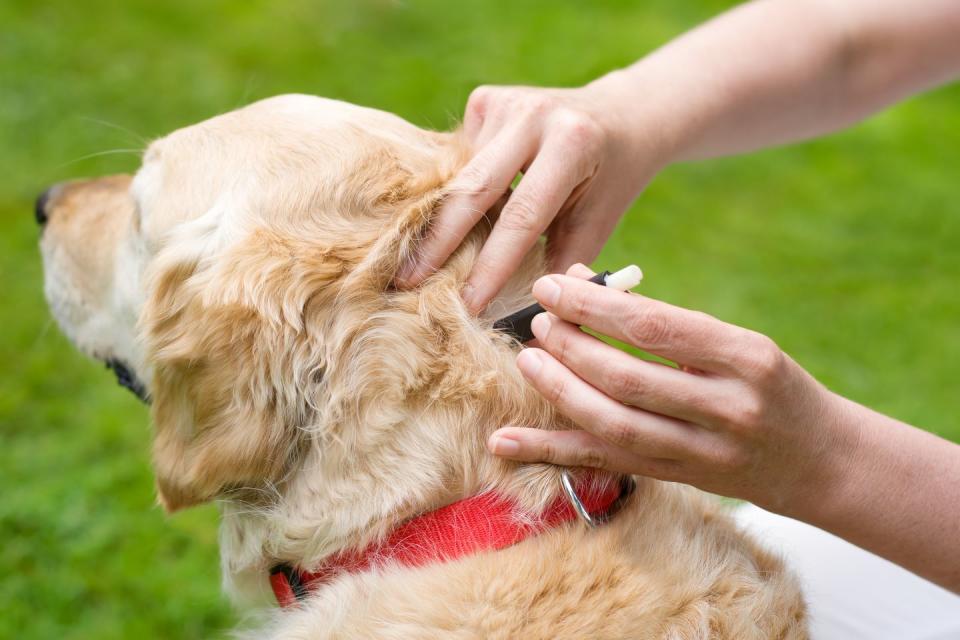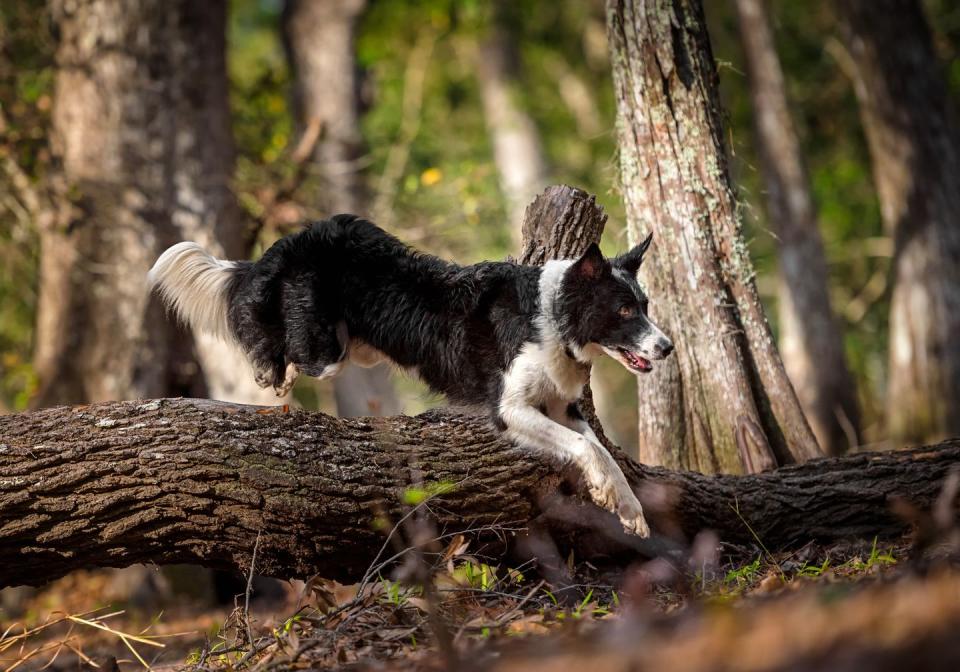4 hazards you should keep away from your pets this spring

Spring is finally here, but the experts are reminding pet owners to watch out for seasonal hazards that could harm dogs. From avoiding poisonous plant bulbs to keeping an eye open for ticks, it's important you watch where your dog walks.
With this in mind, Helen Wikeley, Veterinary Surgeon at leading animal welfare charity, Battersea, has shared her expert knowledge on how to keep pets safe this spring as they enjoy the warmer weather. Keep reading for everything you need to know:
1. Plants and bulbs

Daffodils, tulips, lilies, bluebells and hyacinths are among the spring plants that can be poisonous to our pets. If you have any of these in your garden or home, make sure to keep them well out of reach from your inquisitive furry friends.
"Symptoms of plant poisoning that pet owners should be aware of include drooling, nausea, vomiting, diarrhoea, and increased heart and respiratory rates," says Helen. "If you notice any of these symptoms and think your pet might have been poisoned, contact your vet immediately."
2. Ticks

Ticks are common in woodland and grassland areas, particularly during springtime. If you've been playing outside with your dog, run your hands over your pet to check for any ticks they may have picked up.
"It is vital that a tick is removed correctly; if you squeeze the tick, or leave its head inside your pet's body, the risk of infection is increased," adds Helen.
If and when you do find a tick, it's really important to remove it immediately as this will lessen the chances of your pet becoming unwell. Using a device designed specifically to twist the tick off is the best practice. You could also consider talking to your vet about products designed to prevent ticks in the first place and these are particularly handy if you routinely walk through an area prone to them.
3. Seasonal allergies

Just like humans, dogs – and sometimes cats – can also suffer from seasonal allergies. And spring is one time when these allergies can become more prominent. You may notice that your dog or cat has been itching their skin more after being outside. This itching can allow sore spots to develop on their skin, which can ultimately lead to a risk of infection.
If you do notice that your pet is itching more, ask your local vet for advice. Wet flannels or cool packs can provide some soothing comfort to your pet's skin.
"Animals can sometimes develop red, watery eyes in hot dry weather and may get dust or pollen stuck in them as a result," Helen says. "To help with this, gently clean around their eyes with damp cotton wool."
4. Wasp and bee stings

Dog bee stings are not as common as you may expect, but they still do occur. "Dogs are most likely to suffer from a swollen paw or face with some localised pain or irritation," explains Helen.
"This should go away after a short period of time, however in some cases, your pet may be allergic to the sting which can result in a severe reaction and could be fatal if not treated."
Here is what you'll want to look out for:
Dogs – In dogs, you may notice them biting or giving attention to a specific area that is more than likely swollen, if they have been stung. They may also start whining or holding up or pawing at the affected area.
Cats – Your cat may start nibbling, pawing or suddenly giving attention to the area in which they've been stung. They may also yowl or be more vocal than usual. Swelling in a particular area of their body is another tell-tale sign that they may have been stung.
There are a few more symptoms, which may suggest that your pet has actually had an allergic reaction to a sting and these are:
· Vomiting
· Rapid breathing or difficulty breathing
· Weakness or collapsing
· Pale gums
· Diarrhoea
· Excessive swelling around the area of the sting and spreading away from it
If you do notice any of these signs, or your dog or cat has been stung several times or has been stung on the throat or mouth, you should contact your vet as soon as you possibly can for advice. They will most likely ask you to bring your pet straight in for treatment if any of these allergic reactions have happened.
You Might Also Like


